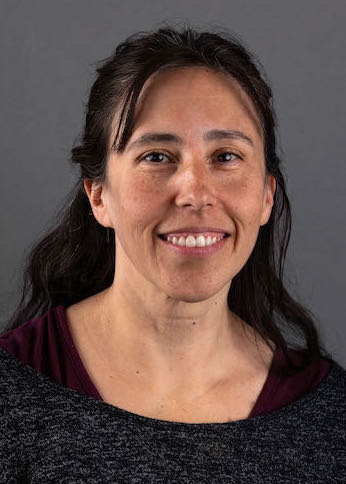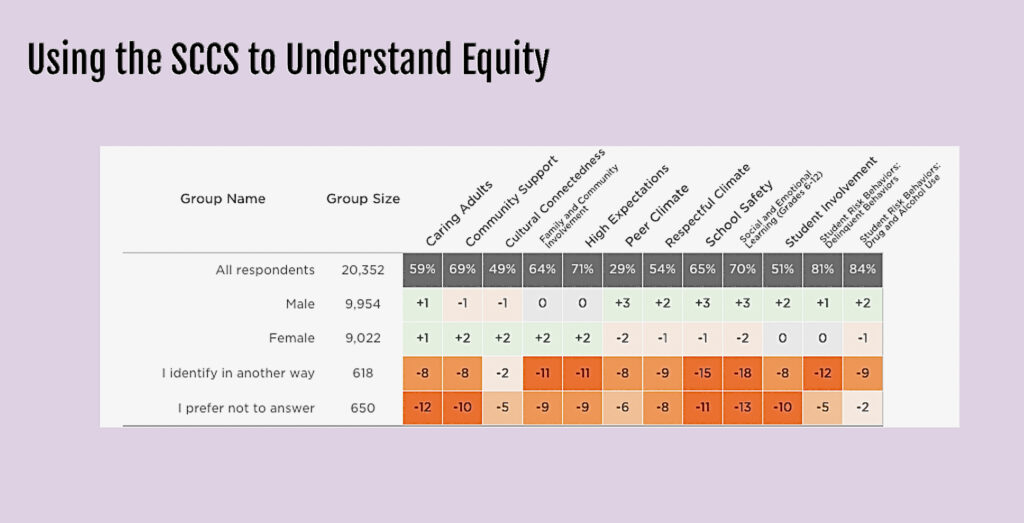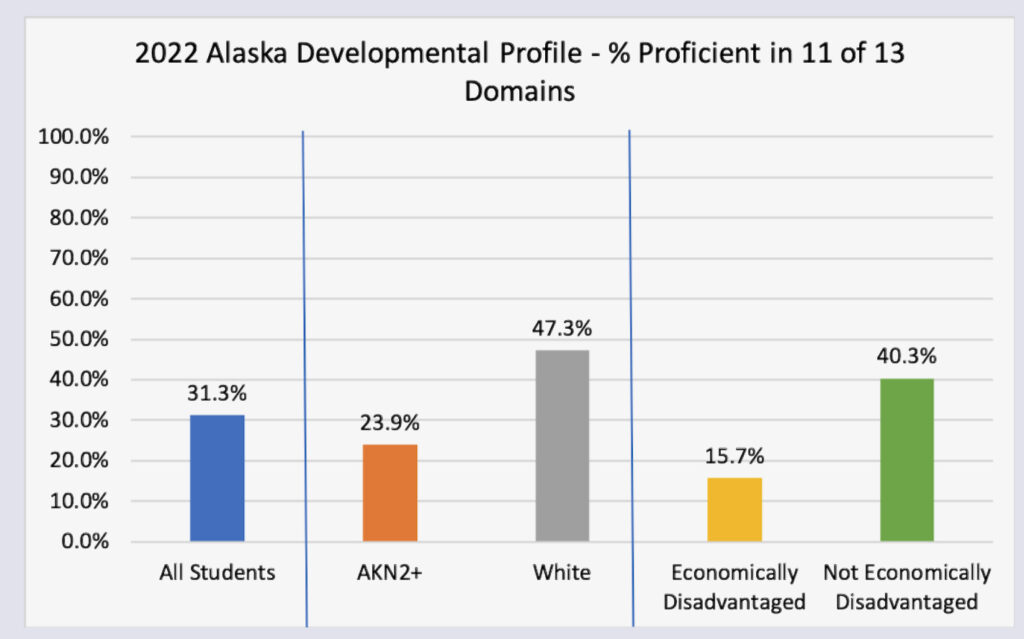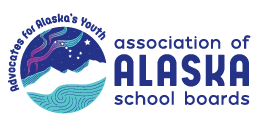Educational Equity: How are we doing?

Lori Grassgreen, Director of Conditions for Learning / Community Engagement
School board members across the state contributed to the AASB educational equity statement, which states, “AASB believes in educational excellence for all of Alaska’s students. Equity in public education means the fair allocation of resources, based on need, to address opportunity gaps and promote success for every student in Alaska. AASB offers tools and resources to school boards and school districts to identify and eliminate systemic barriers and discriminatory practices, prejudices and beliefs.”
Many districts are investing in staff, programs, curricula, and partnerships to improve equity for their students. This has meant looking at data, adopting policies, using frameworks, and adopting or adapting curricula.
School Climate and Connectedness data from over 30 school districts in Alaska shows some districts are having an impact. For example, students and families perceive their schools as more culturally responsive than in the past. To see more trends, check out data broken out by race, socioeconomic, or gender in the Educational Equity How Do You Know Webinar Slides.
2023 School Climate and Connectedness data can be found here.

In April, AASB’s Director of Membership Services Tiffany Jackson, Data and Evaluation Coordinator Lauren Havens, and Conditions for Learning Director Lori Grassgreen hosted a webinar to take a look at ways to understand how your district is doing on educational equity. A recording and materials from the webinar can be found here.
Lauren highlighted why disaggregating data – looking at results separately by race, socioeconomic status, and other groups– can paint a more detailed picture of how we are doing as a state and where there are still disparities. For example, when early childhood skills and domains are broken out by socioeconomic status, we can see a large gap in kindergarten readiness.
Similar differences can be seen when looking at special education referrals, graduation rates, post-secondary enrollment and attendance by race and economic status. It’s important for districts to take the time to dig into their data and understand how their schools can better serve all students.

At the webinar, the Juneau School District and Nome Public Schools also shared how their board and staff are working to address educational inequities.
Juneau School District Staff Member Ted Wilson shared some of the tools and structures the Juneau School District has used, including their Equity Framework to guide board decisions, equity site councils for each school, tools to use as a site council, and district-wide partner advisory group. JSD continues to refine their work and improve the processes and tools being used.
Nome School Board President, Sandy Martinson, shared the Nome Public Schools Equity Framework. The school board, district office staff, and school administrators took the Nome equity framework and developed key steps to take to enhance equity in their district. This was an important collaboration. While school district staff determined what would happen at a building or within the district they were able to share what resources, policies, and supports they needed from the school board to advance the equity goals.
What are you doing as a school district or as a school board to improve outcomes for every student? Below are some questions to get you started.
Key Questions to Consider When Developing Your Equity Work
- Have you defined equity or set equity goals as a school board?
- What are you investing in, and what are you not investing in as a board? Which students and families are benefiting from these investments?
- Do your policies align with your equity definition and goals?
- Who is positively impacted by policies? What policies could support students that are not being served?
- What data are you using to hold yourself accountable?
- What equity gaps exist in academics in perceptions around safety or connectedness?
- Where are we seeing students overrepresented or underrepresented (special education, advanced classes, reading levels, absenteeism, post-secondary enrollment)?
- What does the makeup of your staff look like compared to your student and family population?
For more information on board or site-based equity workshops contact tjackson@aasb.org.
For more information on data snapshots contact lhavens@aasb.org.
For more information on school climate and connectedness survey data contact kmoore@aasb.org.
